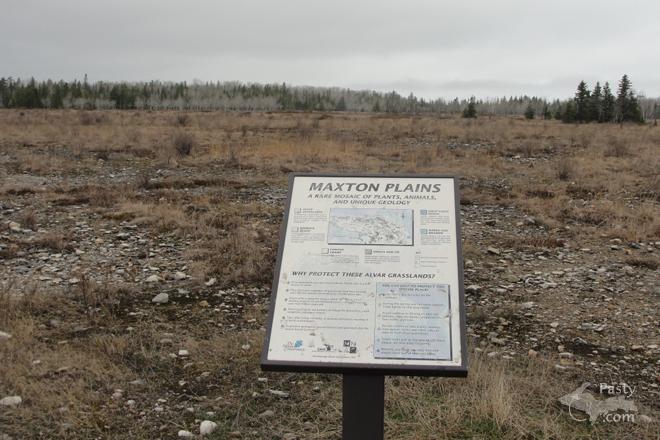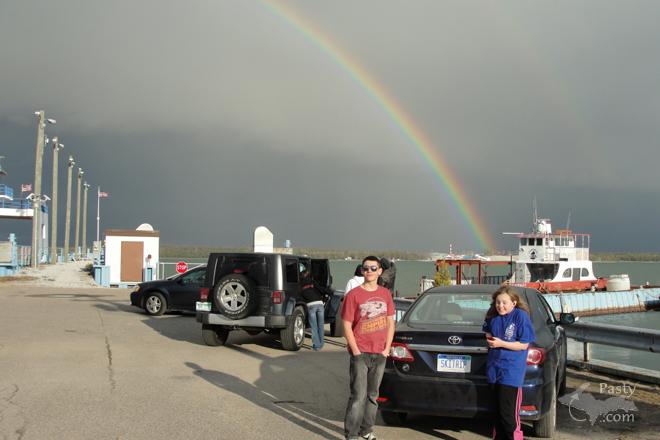By Mary Drew at Pasty Central (Mdrew) on Thursday, April 12, 2012 - 07:47 am:
Chris Beaudoin, better known on the Pasty Cam pages as "Dunerat", sent in today's photos, along with a great description of them, so without further ado, here's Dunerat:
"Last weekend I took the kids to Drummond Island on a day trip and we came away with some images you might like to share on the Pasty Cam. We went to the north part of the island to the Maxton Plains. The first photo is of the sign which explains that the Maxton Plains include a relatively rare biological environment called an Alvar Grassland, which has intermittent thin layers of soil over a plain of rock, usually limestone. In Drummond Island's case, the underlying rock is dolomite. Vegetation tends to flourish over cracks in the rock that have accumulated dust and nutrients. In places where the overburden has been removed, the underlying rock looks remarkably flat, like pavement.
The second photo shows one of a pair of sandhill cranes we saw up there.
On the ferry ride back to De Tour Village, we noticed a rainbow forming, and when we drove off the ferry and were able to turn around and get a better look, we saw probably the most spectacular rainbow I've ever seen. It was a complete arc, and my son said he could see a complete, but fainter double along with it. The lens on my camera doesn't have a wide enough angle to capture the complete arc. Photo number three shows the left limb of it meeting the water. Coincidentally, there was an area of lighter-colored rain in the air nearby, which made it look like the rainbow was boiling the water and creating a plume of steam that drifted away downwind. Of course, there's no true place that defines "the end of the rainbow"; it's all in the eye of the beholder.
The fourth photo shows the double, off to the right side of the main right limb. That's the Osborne Minerals Company loading facility you see in the background."
Thanks, Chris, for the run-down of your day with the kids on the most eastern spot of the U.P..









